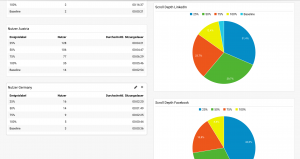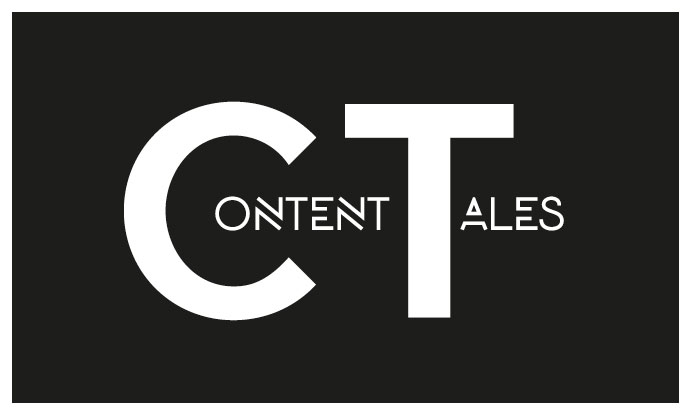READING TIME: 3 MINUTES
Everybody who’s in charge of a business blog or a website is well aware of how important it is, to continuously monitor the most important KPIs. Google Analytics and many third party tools offer content marketers detailed insights into their user’s behavior. Pulling together relevant metrics and providing them to the management is no rocket science. Drawing the right conclusions can be tricky though. No matter if you are a content marketer, marketing specialist or an executive, always make sure you look at the following content marketing KPIs.
Before we dig into details, let me briefly explain why it’s important to differentiate between two major types of content marketing KPIs. These types are:
- Awareness-oriented KPIs
- Behavior-oriented KPIs
Both of them provide you with a different perspective, when it comes to monitoring your blog’s or website’s metrics. Depending on the goal you’ve set for a specific piece of content, you need to consider a different type. Let me explain this by taking an example.
Awareness-oriented content marketing KPIs
Let’s assume you’re working for a B2B company and planning to publish a customer success story on the corporate blog. The post consists of a nicely done video portrait, some emotional photos and text. On the one hand this type of post is supposed to create brand awareness and on the other hand it’s supposed to describe how your corporation has solved a customer’s problem. In order to engage your readers you use various storytelling elements.
In most cases a well-done customer success story keeps your team busy for quite some time. In return you expect to see a lot of traffic on your post. It’s the aim that as many users as possible read the post carefully and understand how your solution positively affected the customer’s business. When it comes to analyzing the post’s performance, you need to look at awareness-oriented KPIs – these are:
- Total visits
- Average visit duration: Average time spend on your website
- Social shares: Number of users who shared your content
- Bounce rate: People who left your website without executing an action (f.e. visiting another page)
- Scroll depth: Shows how deep users scroll a certain page
Scroll depth as an indicator for user engagement
Scroll depth is my number one awareness-oriented content marketing KPI. Why? Because it perfectly indicates how relevant, substantial and engaging your content is. Some marketers may also refer to the average visit duration and the bounce rate. The standard settings for these metrics are sometimes misleading though.
Both, average visit duration as well as bounce rate depend on whether a user executes an action or not. Let’s assume someone noticed your post on social media and jumped right into it. If this user just reads the article without executing an action, he or she will be counted as a bounce. It’s the same with the visit duration: the clock doesn’t start ticking until the user takes an action.
The Scroll depth however is independent from any form of website interaction. You instantaneously can run a report and know how many users read 25 %, 50 %, 75 % or even 100 % of your post. Furthermore scroll depth is whether affected by your user’s reading abilities (how fast he/she reads), nor by their reading behavior (if he/she makes pauses while reading). This means that looking at the scroll depth is often much more meaningful than looking at the visit duration. It’s a strong indicator for the quality of your content. If you are looking for a step-by-step guide how to implement scroll depth into your Google Analytics dashboard, go for this post.

Behavior-oriented content marketing KPIs
Let’s take the same example as above, but with a different initial setting. The plan is not to publish a storytelling-based customer success story, but a fact-based use case instead, which is available for download. The goal of the blog article is now different.
The post mainly serves as a teaser and aims to generate curiosity. It’s crucial to find the right balance between providing interesting and useful content on the one hand, and not giving too detailed insights on the other hand. The deep insights and the educational content are part of the use case, which is available for download, after submitting a contact form. By doing so, users trigger a conversion and a lead is generated. The KPI you have to look at, is the conversion rate, which specifies the percentage of visitors who took the desired action – in this case the submission of a contact form.
More behavior-oriented content marketing KPIs
- CTR (click-through rate): Percentage of users who click on a certain link to the number of impressions
- Cost per click: CTR combined with correlating costs
- Open rate: Percentage of opened e-mails to the number of send e-mails
- Cost per conversion: Conversion rate combined with correlating costs
Today every online marketer seeks for making his actions measurable. The good news is that we have a broad portfolio of different KPIs, which enables us to do so. The bad news is that interpreting these KPIs appropriately is often time-consuming and tricky. It requires a lot of experience to adopt the right measures based on monitoring results. The two KPIs I introduced to you in more detail are very powerful and still easy to read. If you have enjoyed this article, feel free to subscribe to my newsletter or drop me a comment below.




Be First to Comment